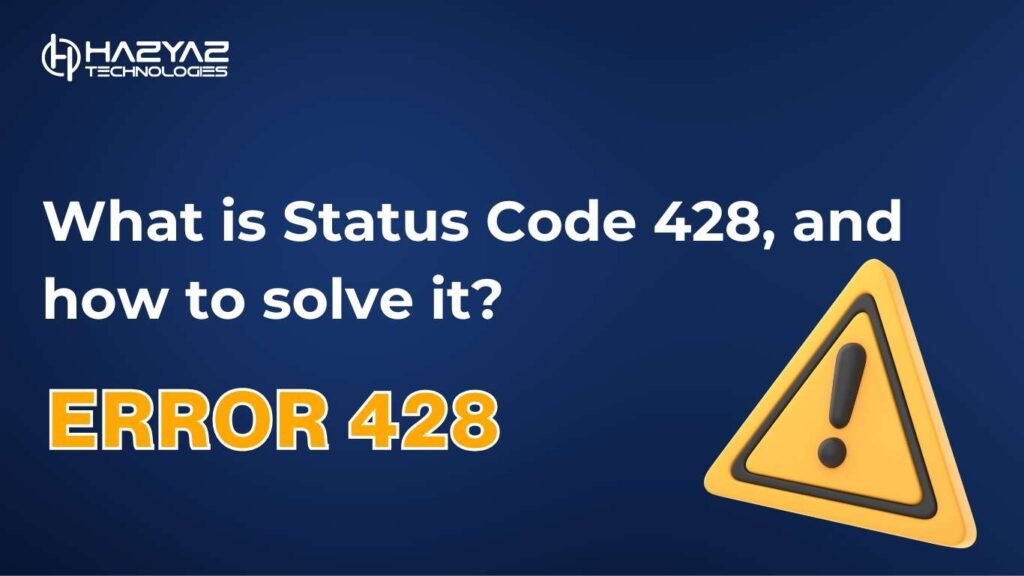Table of Contents
What is the 428 Status Code in HTTP?
The HTTP 428 status code, known as “Precondition Required,” indicates that the server requires the client to include specific preconditions in the request headers. This status code ensures that requests are processed safely, especially in scenarios involving conditional updates or modifications to resources.
For instance, a server might require the client to include headers like If-Match or If-Unmodified-Since to ensure that the request is only executed if the resource’s current state matches the specified conditions.
What Causes the 428 Status Code?
The 428 status code typically arises due to the following scenarios:
- Missing Preconditions:
- The client’s request does not include the required precondition headers, such as If-Match or If-None-Match.
- Concurrent Modification Risks:
- The server enforces preconditions to prevent conflicts caused by simultaneous updates to the same resource.
- Ensuring Data Integrity:
- Preconditions are required to ensure that the resource’s state has not changed since the client’s last interaction.
- API or Application Requirements:
- Certain APIs or applications enforce precondition headers for specific operations.
Example of the 428 Status Code in Action
Imagine a client attempting to update a resource at https://example.com/resource/123 without including the If-Match header:
PATCH /resource/123 HTTP/1.1
Host: example.com
Content-Type: application/json
{
“name”: “Updated Resource”
}
If the server requires an If-Match header to verify the resource’s version, it may respond with:
HTTP/1.1 428 Precondition Required
Content-Type: application/json
{
“error”: “Precondition required. Include an If-Match header to proceed.”
}
How to Fix the 428 Status Code
Addressing a 428 status code involves including the necessary precondition headers in the client’s request. Here are some steps:
- Identify Required Preconditions:
- Review the server’s response or API documentation to determine the required headers.
- Use Conditional Headers:
- Include appropriate precondition headers such as If-Match, If-None-Match, or If-Unmodified-Since in the request.
- Ensure Resource Versioning:
- Use version identifiers like ETags to ensure accurate conditional requests.
- Test and Retry:
- Test the updated request and retry it with the correct headers.
- Consult API Documentation:
- Refer to the API’s guidelines for specific precondition requirements.
Why a Web Development Agency Matters
A professional web design and development agency can help implement robust precondition handling mechanisms to minimise 428 errors. Their expertise ensures secure, efficient, and reliable client-server communication, enhancing the overall functionality of your application.
FAQs on the 428 Status Code
What does the 428 status code mean?
The 428 status code indicates that the server requires specific precondition headers in the client’s request to process it safely.
How does the 428 status code differ from the 412 status code?
The 428 status code enforces the inclusion of preconditions, while the 412 status code indicates that the preconditions in the request were not met.
How can I debug a 428 status code?
Inspect the server’s response for details on required precondition headers and include them in the request.
Does the 428 status code affect SEO?
No, the 428 status code does not directly impact SEO, as it pertains to backend operations and resource management.
What are common scenarios for 428 errors?
Common scenarios include missing If-Match headers, concurrent modification risks, and API-enforced precondition requirements.
Can 428 errors be prevented?
Yes, by adhering to API guidelines, including required headers, and using proper resource versioning, 428 errors can be minimised.
By understanding and addressing the 428 status code, you can ensure safer and more efficient HTTP request handling, reducing conflicts and enhancing application reliability.



